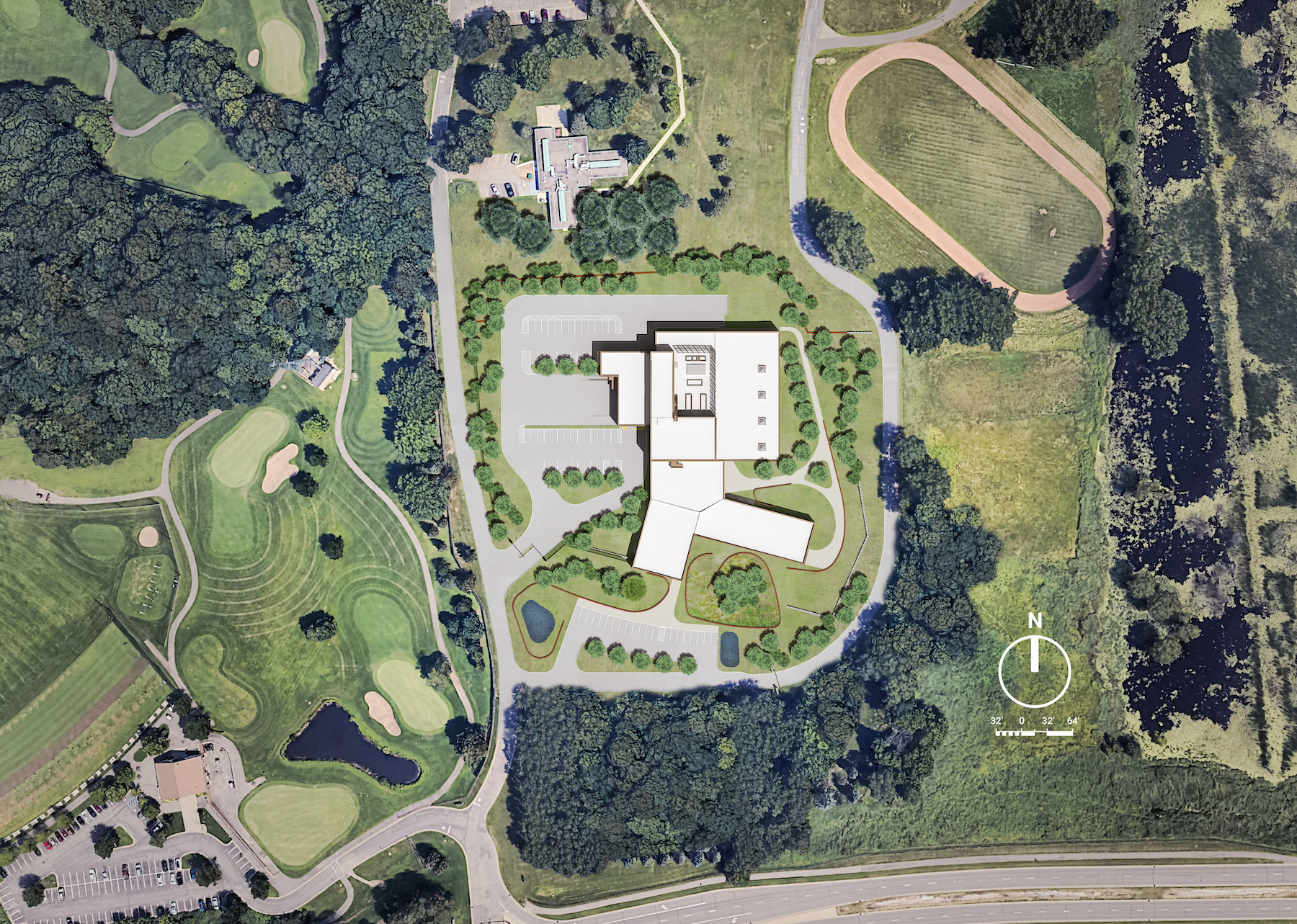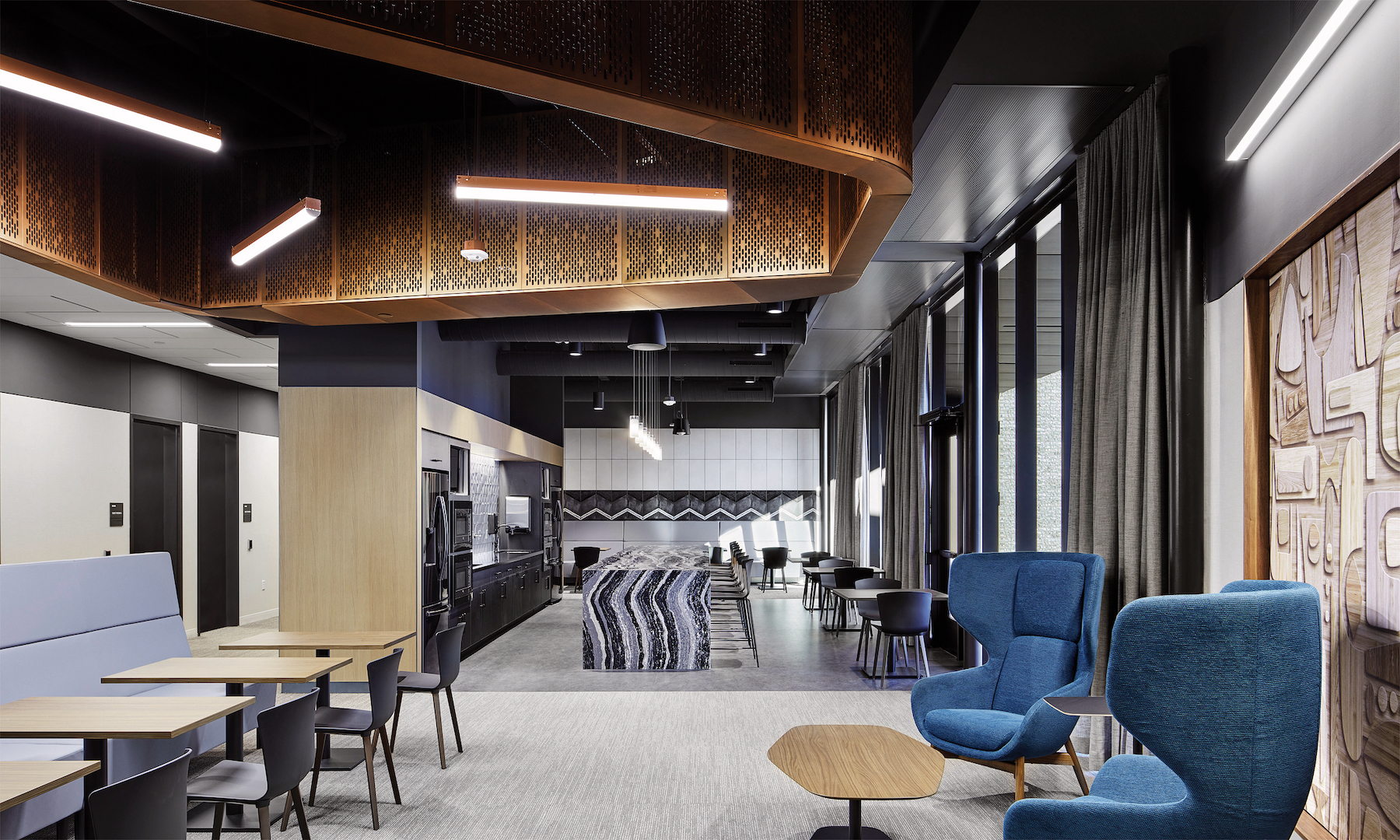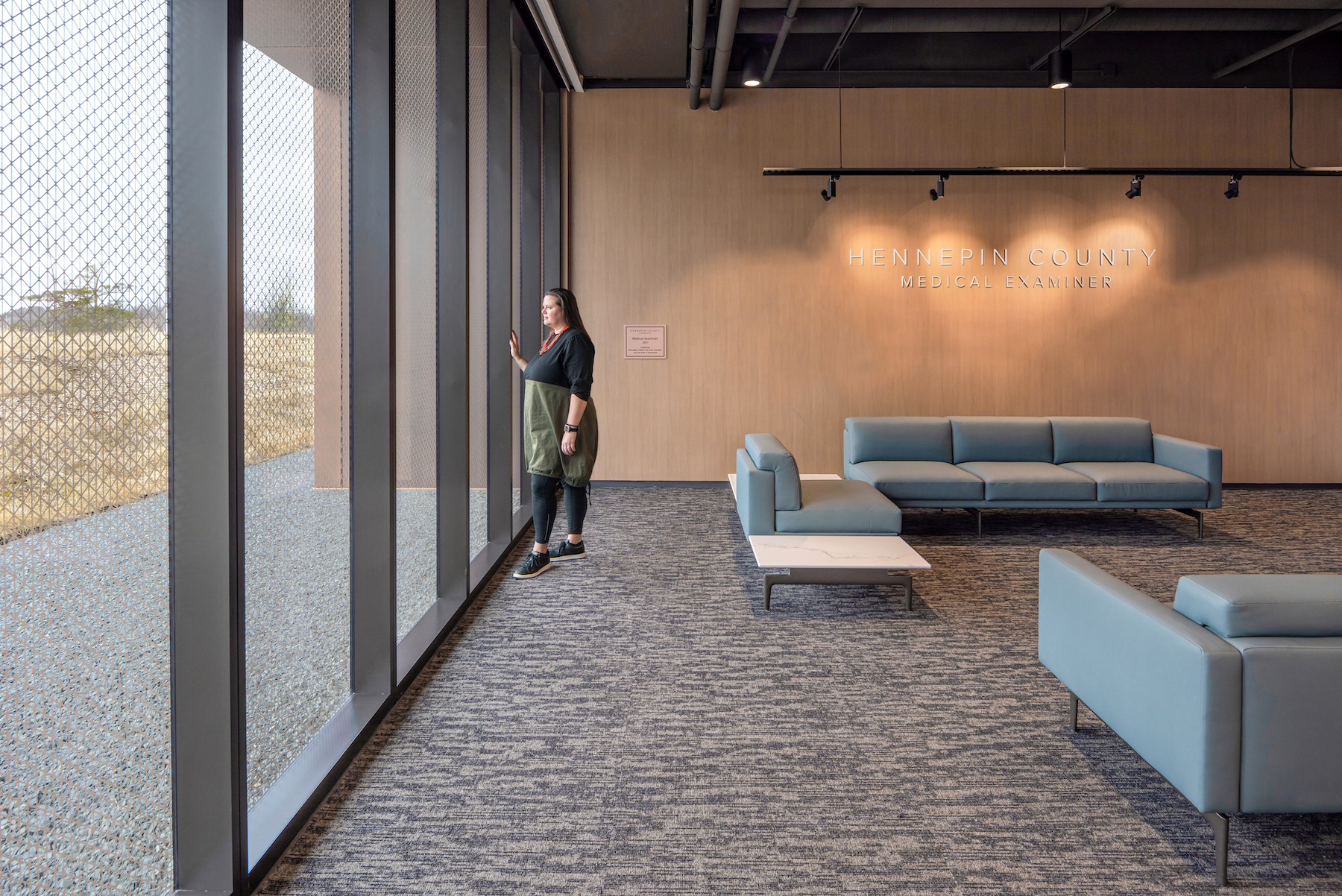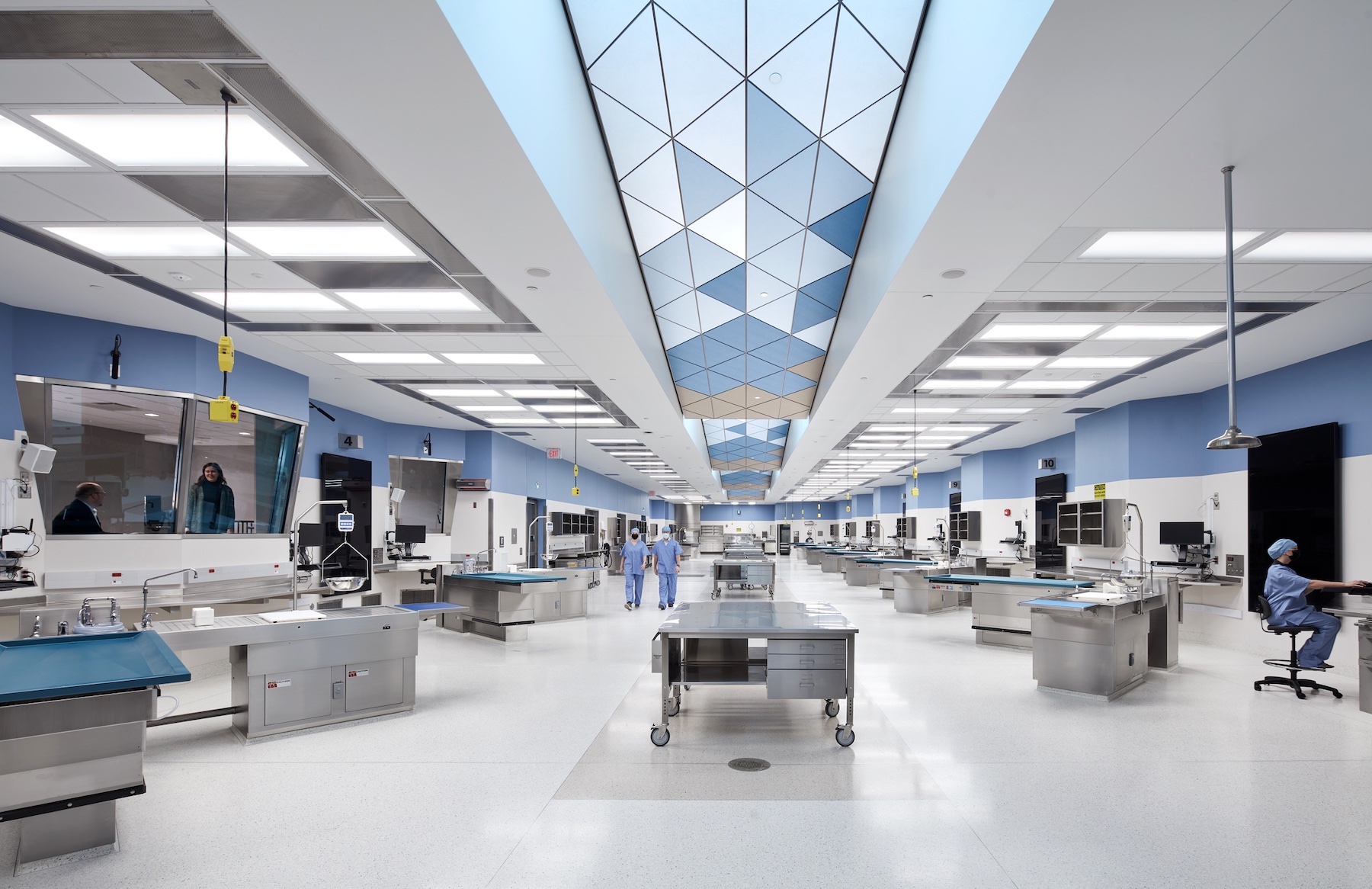Last November, a team led by LEO A DALY completed a new medical examiner office building for Hennepin County in Minnesota that has been recognized as a one-of-its-kind facility in the U.S. The $53 million, 64,000-sf building, located in Minnetonka, Minn., is serving as both a regional center of excellence and a nationwide destination for professional education. It replaces an office that, in 2021, investigated a record 10,000 deaths, according to the Minneapolis Star Tribune.
Dr. Andrew Baker, the county’s chief medical examiner, and his staff reportedly visited nearly a dozen medical examiner offices around the country in search of best practices. They found only three construction firms in the country that specialize in medical examiner offices and crime labs, according to the Star Tribune. (Iowa-based Knutson Construction was the general contractor on this project.)
Indeed, this was the first medical examiner’s facility that LEO A DALY had worked on. The services provided by the firm were architecture, interior design, structural, mechanical, electrical, and fire protection engineering. The project’s lab consultant was MWL Architects. Egan Mechanical was the mechanical subcontractor, and Parsons the electrical sub.
The new facility is set up for greater efficiency and ergonomics. For example, previously bodies that entered the morgue had to be transferred from a gurney to a table by staff, thus creating an injury risk. The patented tables in the new facility can be moved up or down to accommodate the staff’s height, strength, and dexterity. In addition, the new office has its own CT scanner, which allows for greater precision when presenting evidence for trials, and for reducing autopsy times.

Function and form
The new office “advances design for integration, well-being, and discovery,” states LEO A DALY. Its northern wing houses laboratory functions, including 12 autopsy stations, storage coolers, and freezers for more than 130 decedents, specialized examination and analysis areas, tissue recovery, investigations, and spaces for advanced observation and training. Finishes were selected for durability and ease of sanitation. Strict security and safety measures are balanced with studious attention to staff health and well-being.
The southern wing houses office space, training rooms, consultation spaces, and shared lounges. A unifying hub provides a place for relaxation, connection, and access to the exterior space. The facility is nestled into a woodland and provides opportunities to connect with nature and enjoy respite from this stressful work.

Well-being and mental health
Trauma-informed care provided the nexus of a design for a workplace focused on supporting the mental, emotional, and social health of the staff and doctors.
The building’s placement on the site captures views from staff offices, training and break areas into natural forests, prairies, and wetland areas. Daylight streams into the interior through large sidelights in the office wing. Skylights in the laboratory wing scatter diffuse, refracted light throughout the autopsy area. Angled skylights provide natural light to improve color clarity, aid diagnosis, and prevent visual fatigue. Overhead and task lighting are each manually adjustable and automated for energy efficiency.
Upon exiting the lab, examiners and staff have immediate access to the exterior thanks to the office wing’s branched form. Choice—a central element of trauma-informed design—is offered between spaces for social interaction and quiet, personal reflection. Natural materials and lighting strategies were used to reduce stress levels.

Indoor air quality improved
Hennepin County handled an estimated 1,500 autopsies in 2021.
Autopsies subject doctors and staff to an array of odors and physical strain. The design of the new facility responds with a strategic focus on indoor air quality, ergonomics, and injury prevention.
Computational Fluid Dynamics (CFD) modeling was used to create a breathing zone for doctors and staff that is continuously refreshed with clean air. Each autopsy station is zoned separately and includes personal controls over airflow volumes. Outside air is carefully directed downward and toward low sidewall exhaust grilles, virtually eliminating contaminated air from the room. To save energy, an override switch can be triggered when the space is unoccupied.
Eliminating air flow between the lab and office areas is achieved through precisely controlled air pressure. Clean rooms are positively pressurized relative to dirty rooms to contain odors, pathogens, and contaminants. The office wing of the building maintains positive pressure from all other sections of the building through a separate mechanical system.
Design for discovery
The new Medical Examiner office has achieved National Association of Medical Examiners accreditation, and has been toured by chief medical examiners from across the country. The building’s educational aspects enable discovery by serving as a feeder for medical examiner recruiting.
Unique training features, such as 180-degree visual table observation viewing platforms and 96-inch vertical monitors, provide in-depth educational opportunities for traveling fellows and doctoral students. According to the client, the facility “not only prepares the workforce of the future, but [also] places our region in a sought-after position for the development and training of a highly skilled scientific workforce, adding value to our economy.”
Related Stories
| Jul 19, 2013
Renovation, adaptive reuse stay strong, providing fertile ground for growth [2013 Giants 300 Report]
Increasingly, owners recognize that existing buildings represent a considerable resource in embodied energy, which can often be leveraged for lower front-end costs and a faster turnaround than new construction.
| Jul 2, 2013
LEED v4 gets green light, will launch this fall
The U.S. Green Building Council membership has voted to adopt LEED v4, the next update to the world’s premier green building rating system.
| Jul 1, 2013
Report: Global construction market to reach $15 trillion by 2025
A new report released today forecasts the volume of construction output will grow by more than 70% to $15 trillion worldwide by 2025.
| Jun 28, 2013
Building owners cite BIM/VDC as 'most exciting trend' in facilities management, says Mortenson report
A recent survey of more than 60 building owners and facility management professionals by Mortenson Construction shows that BIM/VDC is top of mind among owner professionals.
| Jun 5, 2013
USGBC: Free LEED certification for projects in new markets
In an effort to accelerate sustainable development around the world, the U.S. Green Building Council is offering free LEED certification to the first projects to certify in the 112 countries where LEED has yet to take root.
| Jun 3, 2013
Construction spending inches upward in April
The U.S. Census Bureau of the Department of Commerce announced today that construction spending during April 2013 was estimated at a seasonally adjusted annual rate of $860.8 billion, 0.4 percent above the revised March estimate of $857.7 billion.
| May 3, 2013
'LEED for all GSA buildings,' says GSA Green Building Advisory Committee
The Green Building Advisory Committee established by the General Services Administration, officially recommended to GSA that the LEED green building certification system be used for all GSA buildings as the best measure of building efficiency.
| Apr 30, 2013
Tips for designing with fire rated glass - AIA/CES course
Kate Steel of Steel Consulting Services offers tips and advice for choosing the correct code-compliant glazing product for every fire-rated application. This BD+C University class is worth 1.0 AIA LU/HSW.
| Apr 24, 2013
Los Angeles may add cool roofs to its building code
Los Angeles Mayor Antonio Villaraigosa wants cool roofs added to the city’s building code. He is also asking the Department of Water and Power (LADWP) to create incentives that make it financially attractive for homeowners to install cool roofs.
| Mar 15, 2013
Singapore R&D campus takes top honor in Lab of Year competition
Singapore CREATE R&D campus takes top honor in Lab of Year competition, sponsored by R&D Magazine.

















